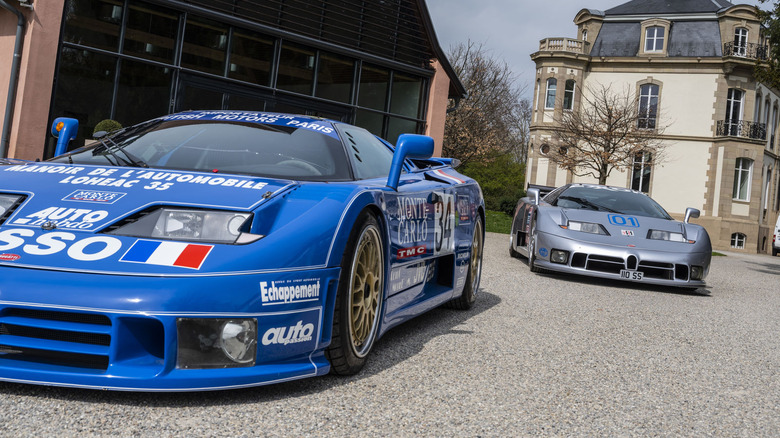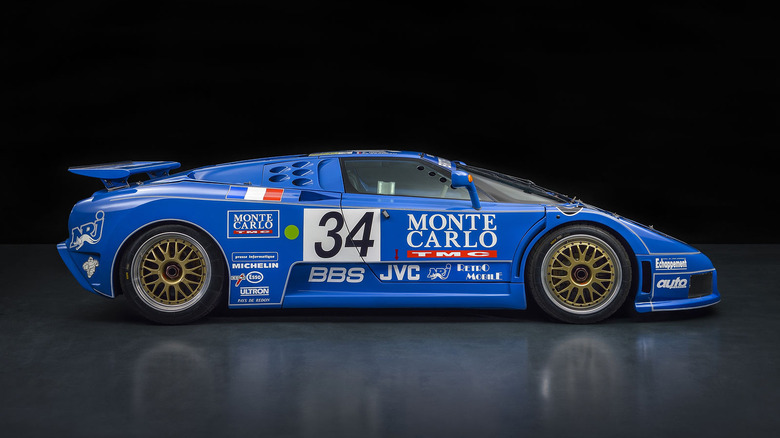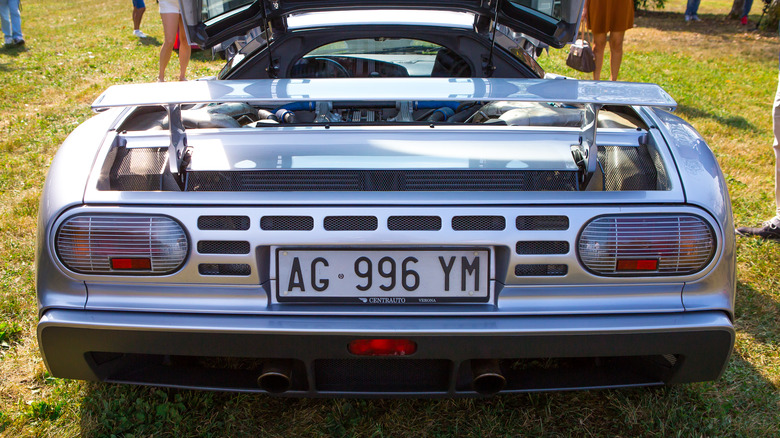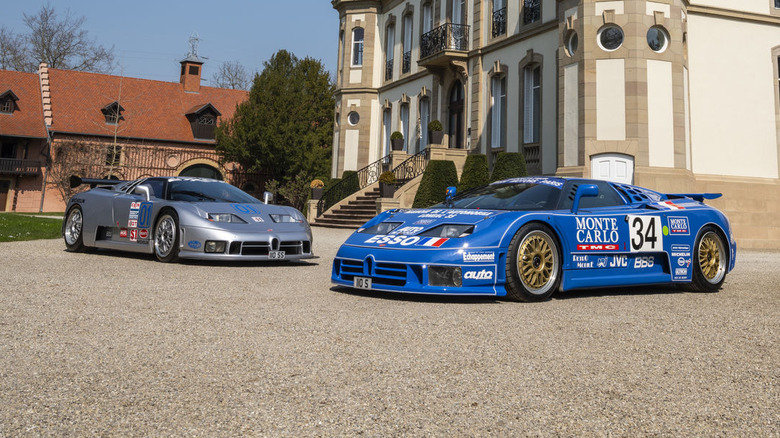How An Ambitious Bugatti Supercar Led To The Company's Bankruptcy
Ettore Bugatti started making production cars in 1909, and the Bugatti brand had a successful racing career throughout the decades after World War I. Bugatti also built an airplane in the 1930s called the Bugatti 100P, and it ended up becoming an Art Deco masterpiece. However, things went downhill from there.
Ettore's son, Jean Bugatti, died after crashing his Bugatti Type 57 prototype on August 11, 1939. He was just 30 years old, and he was supposed to be the heir to Ettore Bugatti's empire. The fatal accident happened on a curvy stretch of road in Duppigheim, just a stone's throw away from the company HQ in Molsheim, Alsace, France.
Three weeks after Jean's death, Nazi Germany invaded Alsace and demanded that Bugatti's factories be used to produce torpedoes and cars for their army. Ettore refused and managed to flee to safety in Paris. Years later, he returned and found his Molsheim factory in ruins after the war, and he died on August 21, 1947. The automaker made its last stand at the 1952 Paris Auto Show before ceasing operations in the same year.
After several attempts of reviving the Bugatti marquee in the 1960s and 1970s, Italian entrepreneur Romano Artioli acquired Bugatti in 1987. This acquisition made way for the birth of Bugatti Automobili S.p.A. and the new company's first and only car, the legendary EB 110 supercar.
Bugatti EB 110: Supercar icon
Few are privy to Romano Artioli's keen eye on Bugatti since the company shut its doors in 1952. "I decided that if nobody took care of the situation, I'd work and work and one day bring Bugatti back," said Artioli in an interview with Classic Driver. "I was 20 years old then, and it took me 39 years to finally be able to achieve my goal."
Artioli built a brand-spanking-new factory in Campogalliano, Italy and immediately started work on its first car, something that would give stalwarts like the Ferrari F40/F50 and Lamborghini Diablo a fair bit of competition. Artioli assembled an all-star team of designers and engineers led by Paolo Stanzani and Marcello Gandini in conceptualizing the EB 110 prototype.
As it turns out, Artioli wasn't in favor of Gandini's early designs and found it too angular. The boss was also unimpressed with the prototype's aluminum honeycomb chassis, which he found too cumbersome for an all-conquering supercar. After clashing with the boss, both men handed over their resignation letters, and Artioli hired Gianpaolo Benedini and Nicola Materazzi to fix the problems.
After multiple design alterations and engineering adjustments, the team ended up with a smoother and more rounded sports car prototype with fixed headlamps, cooling ducts in the front bumper, and the Bugatti horseshoe grille front and center. Materazzi retained the scissor doors, side windows, and panoramic windshield. It also has a new carbon-fiber monocoque chassis, an all-wheel drivetrain, titanium bolts, and active aero — things that you wouldn't usually find in a 90s supercar.
Quad-turbo V12 engine
The Bugatti EB 110 is not only a fantastic thing to behold, but it's packing a monstrous, rear-mounted 3.5-liter V12 engine with 60 valves, 12 throttle bodies, and four turbochargers. That breathtaking engine sends power to all four wheels using a six-speed manual transmission. Pumping out 553 horsepower and 451 pound-feet of torque, the EB 110 had an excellent power-to-weight ratio of 353 bhp/ton, allowing it to blitz from zero to 60 mph 3.26 seconds and a 212 mph top speed.
Bugatti also made a track variant of the EB 110. Affectionately called the Super Sport or SS (the EB 110 GT is the standard car), it had the same 3.5-liter quad-turbo V12 as the GT but with 611 horsepower and 480 pound-feet of torque, numbers that were unheard of back in the day. With those numbers, the EB 110 instantly became the fastest series-production car the world had ever seen.
Bugatti unveiled the EB 110 simultaneously at the Grande Arche La Defense in Paris and Versailles on September 15, 1991, 110 years after company founder Ettore Bugatti's birth. The car drew praise for its out-of-this-world performance, but the astronomical price was a different matter. The EB 110 had a base price of 450 million Italian lira (about $200,000) when it debuted in 1991, and the EB 110 SS started at around $240,000.
The end of an era
Bugatti faced financial difficulties when the EB 110 went public due to a global financial crisis, the Gulf War, and overspending after acquiring Lotus and testing the follow-up to the EB110: The EB 112 four-door super sedan. The automaker also dealt with allegations of corporate espionage in which Artioli claimed three Bugatti directors were receiving money from rival carmakers — as recounted in a 2019 Classic Driver interview.
Development for the EB 110 would have cost a fortune, but Romano Artioli knew the Bugatti legacy very well. "We couldn't play it safe. In order to honor Ettore Bugatti, we simply had to push the boundaries. The number of cars wasn't so important to me, but rather the no-compromise quality and innovation," said Artioli. "Throughout the entire project, I always followed Ettore's 'Nothing is too beautiful, nothing too expensive' philosophy."
While other elements may have had a hand in the fall of the brand, it seems clear that this dedication to quality and will to follow Ettore's philosophy ultimately led to the bankruptcy of the business. Bugatti only made 128 examples of the EB 110 (of which 96 were GTs and 32 in SS trim) until closing the factory doors in September 1995.
German racing firm Dauer bought the EB 110 license and all remaining parts in 1997 and produced five more cars. Volkswagen purchased Bugatti in 1998 and forever changed the automotive landscape with the Veyron and Chiron. In 2019, Bugatti paid homage to the EB 110 with the Centodieci, a Chiron with vintage styling, a 1,600 horsepower quad-turbo W16 engine, and a whopping $9 million base price.



